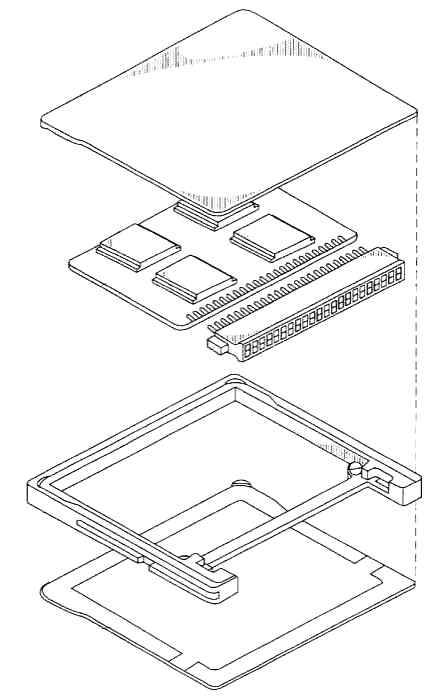First it was the bogus “national security” argument against a Chinese buy-out of Seagate. Now it’s suing STEC over solid state drives (SSD). Has William Watkins, Seagate’s CEO, jumped the shark?
STEC said, per legal SOP, that the suit was “without merit.” After looking at the patents I agree.
Look at the patents
There are 4 patents named in the Seagate suit.
The links will download pdf versions if your insomnia is acting up.
6336174
The first patent covers an invention called a hardware-assisted memory module (HAMM) that can, when there is a system glitch, isolate
. . . itself from the host computer system before copying digital information from volatile memory to nonvolatile memory.
This reminds me of a common RAM-based SSD strategy – used 20 years ago in DEC SSDs – to copy data held in RAM to a disk drive when power failed.
6404647
The 2nd patent is for a solid-state mass memory storage device. This device
. . . comprises a printed circuit assembly and a plurality of non-volatile, high density storage devices mounted to the printed circuit assembly and electrically connected thereto.
A picture is worth 1,000 words:

More than a passing resemblance to a compact flash card – a product I bought in 1993.
6849480
“Surface mount IC stacking method and device.” This patent covers a technique that solves 3 problems:
- Routing signals through stacks of similar chips
- Stacked devices with identical dies that are made into distinct chips – flashed? – later
- Long, high-capacitance interconnects between stacked devices
Seems like folks have been stacking chips for a while. Is there anything new here?
7042664
“Method and system for host programmable data storage device self-testing.”
. . . providing programmable self-testing of a data storage device comprises selecting one or more host programmable tests stored in memory in the data storage device by setting data in a first log in memory of the data storage device.
This invention’s goal is to enable disk drive testing without removing the drive from the host. It embodies the concept of the host providing test parameters for an attached device – which the patent imagines to be a disk.
Size matters
Part of Seagate CEO William Watkins’ pique with STEC is fueled by a suit from 3.5″ drive inventor Rodime that Seagate paid $45 million to settle. Rodime patented the 3.5″ form factor for disk drives – and got the courts to enforce it.
Watkins knows that patenting disk drive form factors is silly – they have to be standard sizes – but if the USPTO grants them and the courts enforce them, why not?
The StorageMojo take
The IC stacking patent may have some merit – I’m no judge of chip packaging. But the other patents, especially for compact flash, seem dubious at best.
The good news is that the Supreme Court has forced the patent courts to change course. In KSR v Teleflex the Supremes ruled that the non-obviousness is a legal question, not a factual one. That bit of hair-splitting means that lower-court rulings can be appealed. Under the old rule once the trial court made a “finding of fact” it could not be re-examined in the appeal.
Rodime would have lost under that rule. While it will take time for KSR to play out, in the short term it almost certainly reduces the value of existing patents – like Seagate’s ludicrous flash drive patent.
While some have portrayed this as Seagate trying to stymie a competitor, it’s more likely that Seagate believes STEC has some useful technology. The promise of a costly legal battle might persuade a smaller company than STEC to settle with a quick cross-licensing deal.
That would help Seagate catch up in the high-end flash SSD market. I hope STEC resists that temptation and continues to focus on the knotty issue of fast random write flash performance.
Comments welcome, of course.


Robin,
Thanks for this very good post. This clearly illustrates what I (and many others) have been saying for some time.
The US patent system is a cynical scam on a grand scale, largely designed to generate revenue for the USPO … and to boost the incomes of lawyers. Trivial patents are a perfect tool for blackmail and intimidation … not discounting the moral dilemma to professional engineers behind such patents.
It seems obvious that the US Patent Office should rule and focus on claims specifically designated as an ‘original invention’. The rest …software and hardware … should be accommodated by the existing product copyright laws.
Interesting that the first two patents (6336174 and 6404647) were originally assigned to Maxtor and HP respectively. Another strategic benefit of a couple of Seagate’s acquisitions.